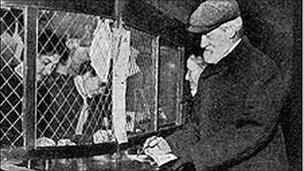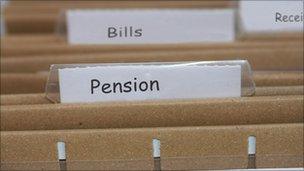State pension: The overhaul and you
- Published

The state pension has seen significant changes since this man collected it in 1909
When the state pension was introduced in 1909, the maximum payment was five shillings (25p) a week - the equivalent of about £20 today.
Just over 500,000 old and poor people queued up to receive it. They had to be at least 70 years old, have an income of less than 12 shillings a week and not have too much furniture, which was judged as a sign of wealth.
An overhaul of the state pension system will see a single-tier pension - of £155 a week - being paid to some new pensioners from April 2016. Others will get less, and those who qualified for a pension before April 2016 will remain on the old system.
So how will this change the current system and how will it affect you?
How is the state pension run at the moment?
But is it correct that not everyone gets these payments?

Pensions can be very complicated to administer and to understand
There seems to be quite a lot of paperwork there?
What do the latest proposals say?
Who wins, if these changes happen?
Who loses and which aspects could prove controversial?